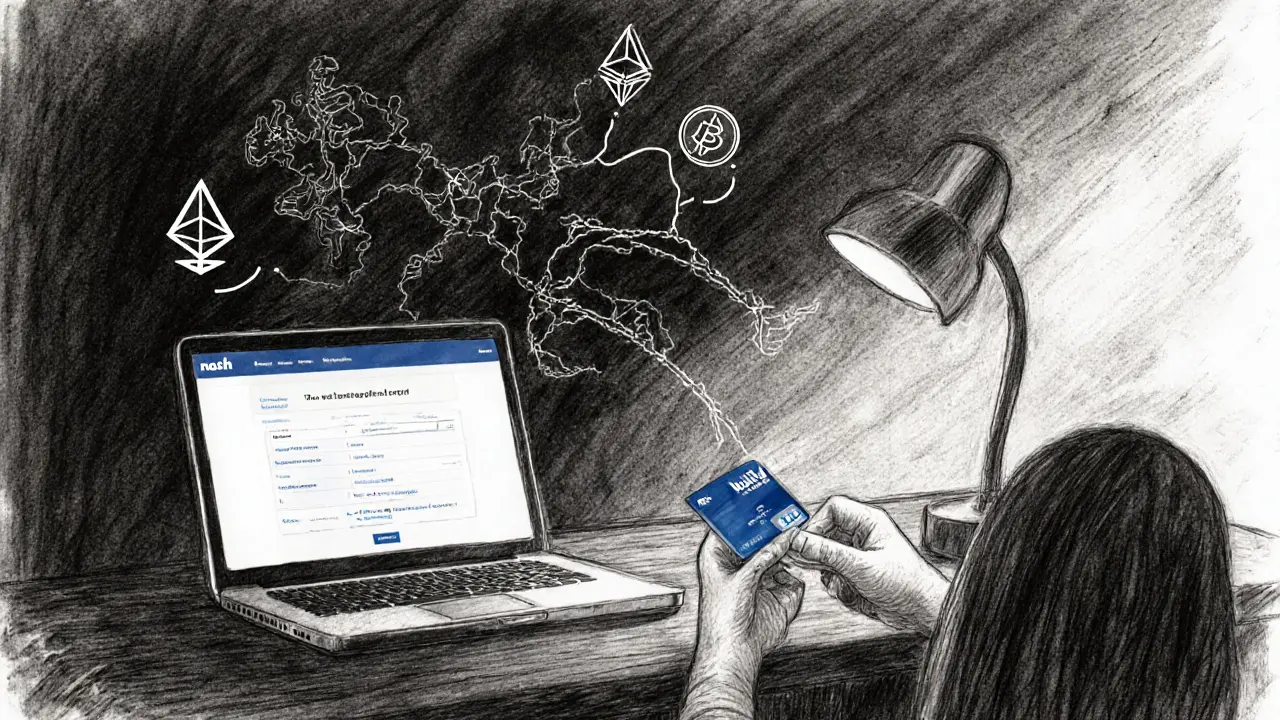Nash crypto exchange offers a secure, non-custodial way to buy and spend crypto with fiat in Europe. With a debit card, IBAN account, and 1% purchase fee, it's ideal for safety-focused users-but low liquidity limits large trades.
Nash Wallet: What It Is, How It Works, and What You Need to Know
When you think about managing your crypto, you probably want control without the hassle. That’s where the Nash Wallet, a non-custodial crypto wallet and exchange that lets you trade directly from your browser without surrendering your private keys. Also known as Nash Exchange, it was built to combine the simplicity of a centralized platform with the security of a decentralized one. Unlike most exchanges that hold your coins for you, Nash Wallet keeps your funds in your control—meaning no one else can freeze, steal, or lose them. That’s the core promise: trade like a centralized platform, but own your assets like a DeFi user.
It’s not just a wallet. Nash Wallet also includes a built-in non-custodial exchange, a trading engine that matches orders peer-to-peer without requiring users to deposit funds into a central pool. This means you can swap ETH for USDC or BTC for SOL without ever sending your coins to a third party. It uses a hybrid model—off-chain order matching for speed, on-chain settlement for security. This setup reduces gas fees and delays, making it one of the few wallets that feels fast without sacrificing safety. And while it doesn’t support every token under the sun, it covers the big ones: Bitcoin, Ethereum, USDT, and major ERC-20s and BEP-20s.
What makes Nash Wallet different from MetaMask or Trust Wallet? It’s the trade feature. Most wallets are just storage. Nash Wallet turns your wallet into a trading terminal. You don’t need to jump between Uniswap, a DEX aggregator, and your wallet. Everything happens in one place. And because it’s non-custodial, you’re not trusting a company’s security—just your own private key. That’s why it’s still used by traders who care about control, not just convenience. But it’s not perfect. The interface isn’t as polished as newer wallets, and customer support is minimal. If you’re new to crypto, you might find it confusing at first. But if you’ve been burned by exchange hacks or frozen withdrawals, Nash Wallet gives you a way out.
It’s also worth noting that Nash Wallet doesn’t offer staking, lending, or yield farming. It’s focused on one thing: safe, direct trading. That’s why you won’t find it in lists of top DeFi platforms. But if you want to move crypto without handing over control, it’s one of the few tools that delivers on that promise. The team behind it has been quiet since 2022, and development slowed—but the core product still works. No updates don’t mean it’s broken. It means it’s simple, and simple often lasts longer.
Below, you’ll find real reviews, comparisons, and breakdowns of similar tools. Some posts talk about exchanges that vanished overnight. Others show how wallets with fancy features still lose your keys. Nash Wallet isn’t flashy. But if you’ve ever lost sleep over a platform you didn’t trust, this is the kind of tool that might finally give you peace of mind.

